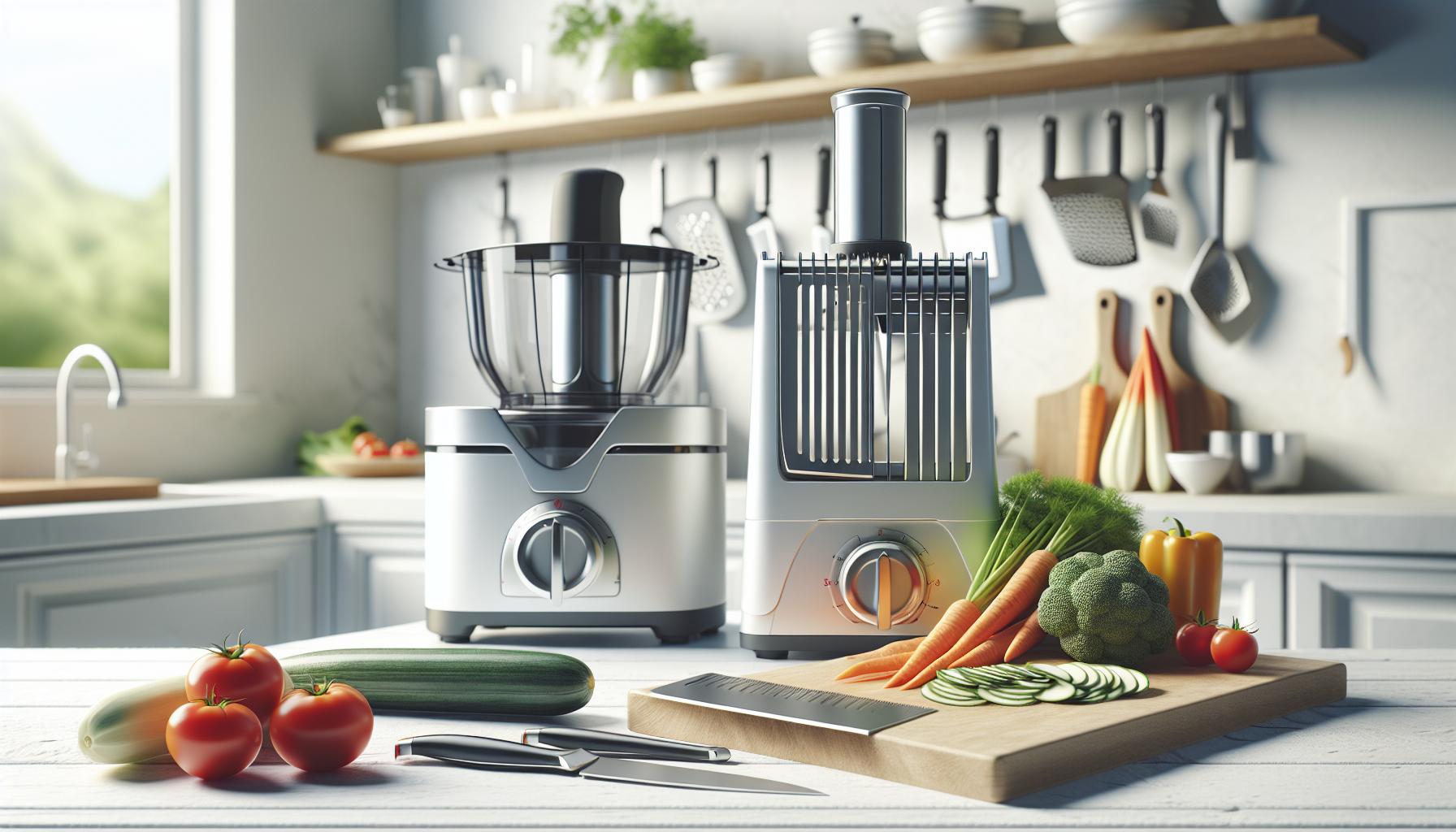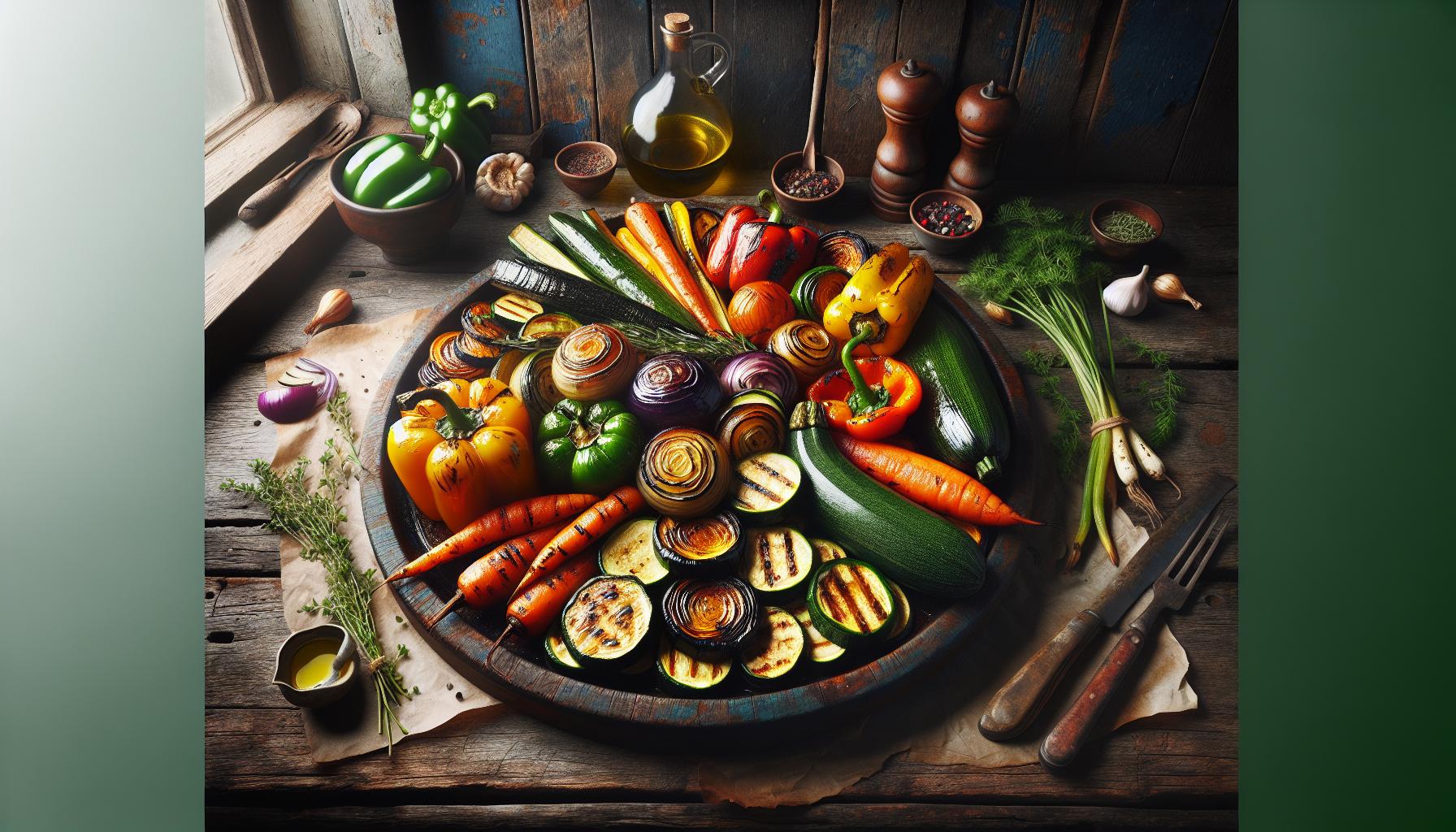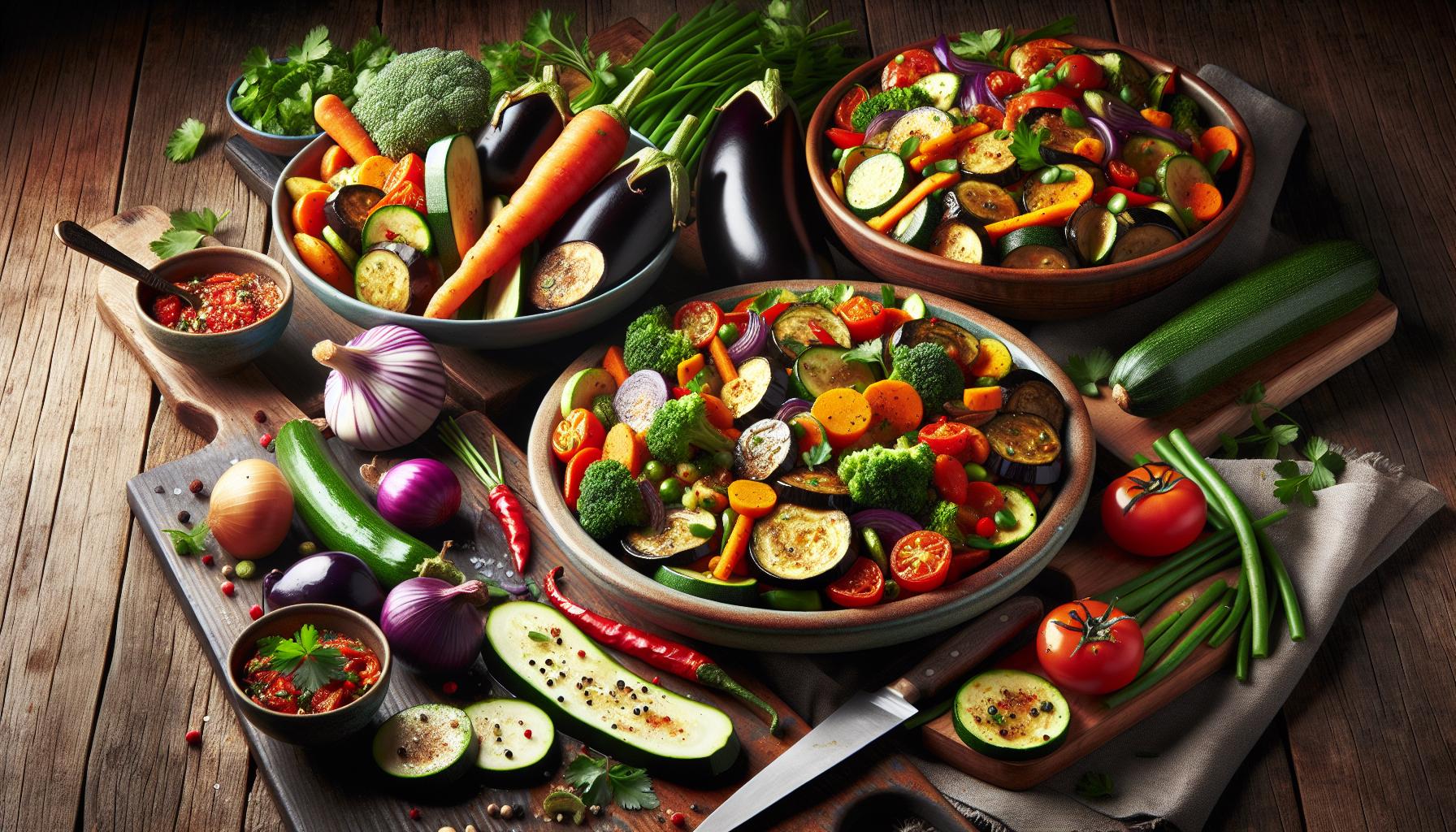Transforming bland vegetables into mouthwatering masterpieces isn’t just kitchen wizardry – it’s an art form that anyone can master. Whether you’re a seasoned health enthusiast or simply trying to sneak more greens onto your plate, these vegetable recipes will make eating healthy feel like a treat rather than a chore.
From crispy roasted Brussels sprouts that taste like candy (yes, really!) to creamy cauliflower mash that’ll make you forget about potatoes, there’s a veggie recipe for every palate. These nutrient-packed dishes prove that eating your vegetables doesn’t have to mean endless bowls of boring salads or steamed broccoli. They’re perfect for busy weeknights, meal prep Sundays, or impressing dinner guests with your culinary prowess.
Healthy Vegetable Recipes
Cooking with fresh vegetables transforms basic ingredients into nutrient-dense meals packed with essential vitamins minerals. Fresh vegetables enhance both the nutritional value and visual appeal of dishes while providing superior taste compared to processed alternatives.
Nutritional Value and Health Benefits
Fresh vegetables deliver concentrated amounts of vital nutrients that support optimal health. Dark leafy greens like kale spinach contain high levels of iron calcium vitamin K. Colorful vegetables such as bell peppers tomatoes carrots provide antioxidants including vitamins A C beta-carotene. Here’s a breakdown of key nutrients in common vegetables:
| Vegetable | Key Nutrients | Health Benefits |
|---|---|---|
| Broccoli | Vitamin C, K, Fiber | Supports immunity bone health |
| Sweet Potato | Beta-carotene, Potassium | Promotes eye skin health |
| Spinach | Iron, Folate, Magnesium | Boosts energy production |
| Bell Peppers | Vitamin C, A, B6 | Enhances immune function |
Seasonal Vegetable Selection Tips
Seasonal vegetables offer peak nutrition flavor texture when harvested at optimal ripeness. Local farmers’ markets provide fresh in-season produce with maximum nutrient retention. Signs of fresh vegetables include:
- Visual Indicators
- Vibrant colors without blemishes
- Firm texture without soft spots
- Crisp leaves free from wilting
- Storage Requirements
- Root vegetables: Cool dark spaces
- Leafy greens: Refrigerator crisper drawer
- Tomatoes: Room temperature countertop
Selecting vegetables based on growing seasons ensures better taste improved nutritional content lower costs throughout the year.
Essential Kitchen Tools for Vegetable Preparation

Proper kitchen tools transform vegetable preparation from a tedious task into an efficient process. These essential implements enhance cooking precision while ensuring safety.
Must-Have Cutting and Chopping Equipment
A sharp chef’s knife serves as the foundation for precise vegetable cutting. Professional kitchens rely on several key tools:
- Chef’s knife (8-inch blade) for general chopping tasks
- Paring knife (3.5-inch blade) for peeling delicate vegetables
- Serrated knife for slicing tomatoes carrots peppers
- Sturdy cutting boards in multiple sizes
- Y-shaped vegetable peeler for removing skins
- Mandoline slicer for uniform cuts
- Microplane grater for zesting citrus garlic ginger
Cooking Vessels and Appliances
Modern kitchens require specific equipment to execute vegetable recipes effectively:
- Large stockpot (8-quart) for blanching greens
- Nonstick sauté pan (12-inch) for stir-frying vegetables
- Cast iron skillet for roasting root vegetables
- Steamer basket for preserving nutrients
- Food processor for quick chopping shredding
- High-powered blender for smooth purees
- Sheet pans with rimmed edges
- Colander for washing draining vegetables
- Storage containers with ventilation
| Tool Type | Recommended Material | Expected Lifespan |
|---|---|---|
| Knives | High-carbon stainless steel | 10-15 years |
| Cutting Boards | Bamboo or hardwood | 5-7 years |
| Cookware | Stainless steel or cast iron | 15-20 years |
Quick and Easy Vegetable Side Dishes

Transform everyday vegetables into delectable side dishes in under 30 minutes. These recipes combine simple ingredients with expert cooking techniques to create flavorful accompaniments for any meal.
Roasted Vegetable Medley
A roasted vegetable medley brings out the natural sweetness of seasonal produce through high-temperature cooking. This dish combines colorful vegetables like carrots, bell peppers, zucchini, red onions with olive oil, herbs, and seasonings at 425°F (218°C) for 20-25 minutes. The vegetables develop crispy edges and caramelized surfaces while maintaining tender interiors. Tossing the vegetables halfway through cooking ensures even browning and prevents sticking. Adding fresh herbs like rosemary, thyme, or sage during the last 5 minutes of roasting infuses aromatic flavors throughout the dish. The finished medley offers varied textures, vibrant colors, and concentrated vegetable flavors that complement any main course.
Sautéed Greens With Garlic
Fresh leafy greens transform into a savory side dish when sautéed with aromatic garlic. The process starts with heating olive oil in a large skillet over medium heat. Adding minced garlic creates a fragrant base before introducing cleaned, chopped greens such as kale, Swiss chard, or spinach. Cooking time varies by green type: spinach needs 2-3 minutes, while heartier greens like kale require 5-7 minutes. A splash of vegetable broth helps steam and tenderize tougher leaves. Salt and red pepper flakes enhance the natural flavors while maintaining the greens’ nutritional benefits. This versatile dish pairs perfectly with grains, proteins, or other vegetable sides.
Hearty Vegetable Main Course Recipes

Main course recipes featuring vegetables transform simple produce into satisfying entrées that serve as complete meals.
Mediterranean Ratatouille
Mediterranean ratatouille combines eggplant, zucchini, tomatoes, bell peppers, onions with fresh herbs in a classic French Provençal dish. The vegetables simmer in olive oil with garlic, thyme, basil until they create a rich, flavorful stew. Traditional preparation involves cooking each vegetable separately to maintain distinct textures before combining them into the final dish. The recipe yields 6 servings packed with vitamins A C E plus fiber antioxidants. Ratatouille tastes even better the next day after the flavors meld together in the refrigerator at 40°F (4°C). This versatile dish serves well hot or cold alongside crusty bread polenta or rice.
Veggie-Packed Stir Fry
Asian-inspired stir fry transforms fresh vegetables into a quick vibrant meal ready in 20 minutes. Snow peas, carrots, broccoli, mushrooms combine with ginger garlic sauce for optimal flavor development. High heat cooking at 400°F (204°C) in a wok creates perfectly crisp-tender vegetables while maintaining nutrients. The sauce uses 3 tablespoons soy sauce, 2 tablespoons rice vinegar 1 tablespoon sesame oil for authentic taste. Protein options include tofu tempeh or seitan to create a complete meal containing 15g protein per serving. This recipe yields 4 portions packed with vitamin C iron potassium.
| Recipe Component | Cooking Time | Servings | Protein Content |
|---|---|---|---|
| Ratatouille | 45 minutes | 6 | 3g per serving |
| Stir Fry | 20 minutes | 4 | 15g per serving |
Creative Ways to Add More Vegetables to Meals
Incorporating vegetables into daily meals becomes effortless with strategic preparation techniques. These methods transform ordinary vegetables into appealing dishes while maintaining their nutritional benefits.
Vegetable Noodle Alternatives
Vegetable spiralizers create pasta-like strands from zucchini, carrots, sweet potatoes, butternut squash or beets. A spiralized zucchini transforms into “zoodles,” offering a low-carb alternative with 3g of carbs per cup compared to pasta’s 43g. These vegetable noodles cook in 3-5 minutes, absorb sauces effectively and maintain a satisfying texture. Raw vegetable noodles add crunch to salads, while cooked versions serve as foundations for hot dishes. Preparing vegetable noodles in advance extends their versatility across multiple meals throughout the week.
Hidden Vegetable Sauces
Blended vegetables integrate seamlessly into classic sauce recipes, enhancing nutrition without altering familiar flavors. Cauliflower adds creaminess to alfredo sauce while reducing calories by 60%. Roasted red peppers blend into marinara sauce, increasing vitamin C content by 169%. Pureed butternut squash creates a smooth mac and cheese sauce with 80% fewer calories than traditional versions. Carrots blend into tomato-based sauces, introducing beta carotene while maintaining the expected color profile. These vegetable-enriched sauces pair with pasta, meat dishes or roasted vegetables.
Best Methods for Cooking Different Vegetables
The cooking method employed for vegetables impacts their flavor, texture, and nutritional value. Understanding these techniques enhances the taste of vegetable dishes while preserving essential nutrients.
Steaming and Blanching Techniques
Steaming vegetables retains 90% of their nutrients through gentle heat application. Place a steaming basket 2 inches above boiling water to create tender-crisp broccoli in 5-7 minutes or asparagus in 3-5 minutes. A tight-fitting lid maintains consistent steam temperature for optimal results.
Blanching involves a 2-step process: brief immersion in boiling water followed by an ice bath. Submerge green beans for 3 minutes or carrots for 4 minutes before transferring to ice water for 1 minute. This method locks in vibrant colors, creates crisp textures, and prevents nutrient loss.
Grilling and Roasting Tips
Grilling vegetables at 400-450°F creates caramelized exteriors with smoky flavors. Brush eggplant slices, zucchini spears, or bell pepper quarters with olive oil, then grill for 4-6 minutes per side. A grill basket prevents smaller vegetables from falling through the grates.
Roasting transforms vegetables through dry heat at 425°F, producing golden-brown exteriors and tender interiors. Space brussels sprouts, cauliflower florets, or sweet potato cubes 1 inch apart on a baking sheet. Toss with 2 tablespoons of oil before roasting for 20-25 minutes, stirring once halfway through.
Exploring Creative Alternatives
Creating delicious vegetable dishes doesn’t have to be complicated or time-consuming. With the right tools techniques and recipes anyone can transform ordinary vegetables into extraordinary meals. From quick side dishes to hearty main courses these versatile ingredients offer endless possibilities for healthy and satisfying cooking.
Whether it’s mastering basic preparation methods exploring creative alternatives or learning proper storage techniques the journey to incorporating more vegetables into daily meals is rewarding. By choosing fresh seasonal produce and applying the right cooking methods home cooks can create nutrient-rich dishes that are both delicious and wholesome.

